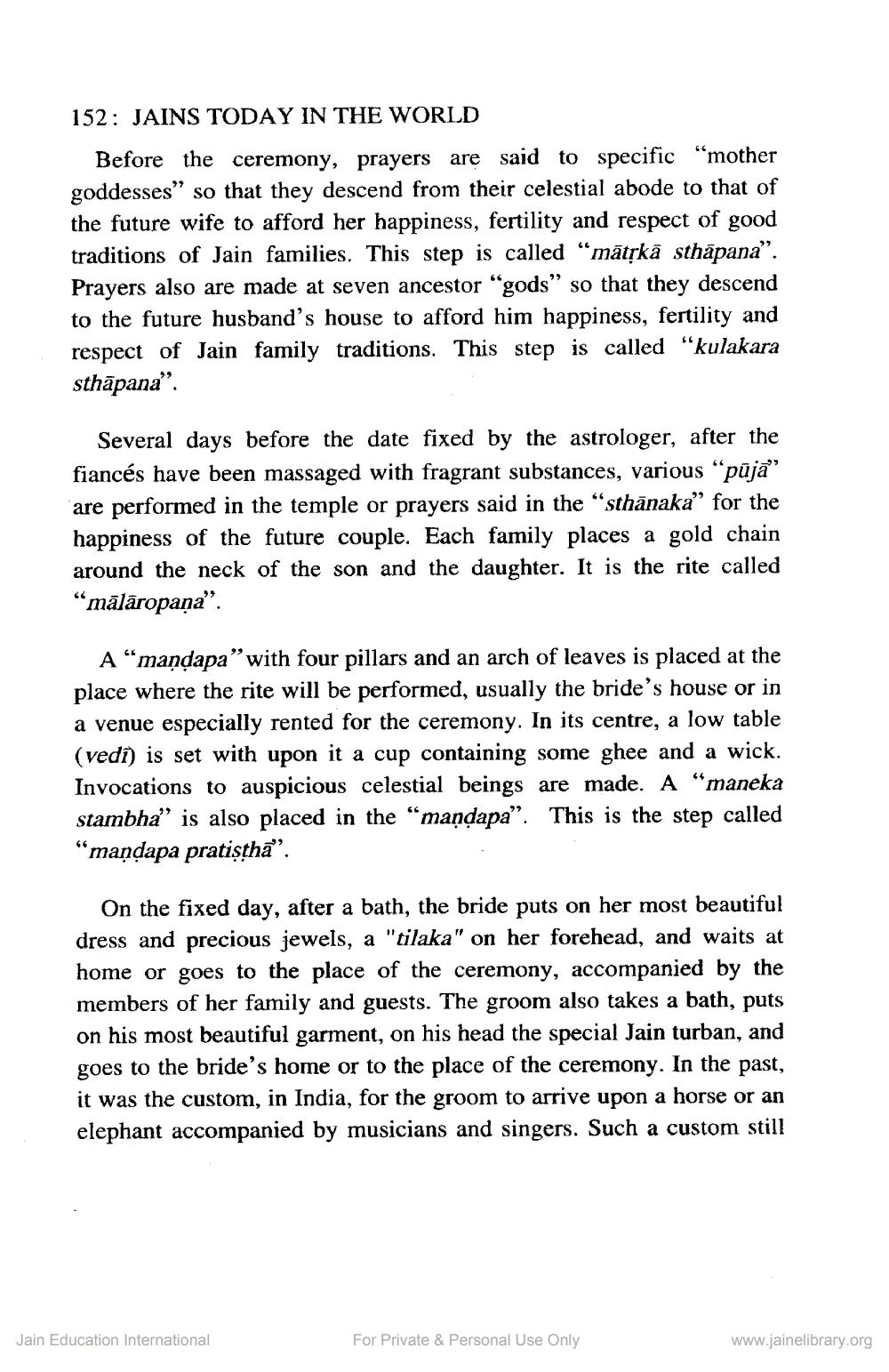________________
152: JAINS TODAY IN THE WORLD
Before the ceremony, prayers are said to specific "mother goddesses" so that they descend from their celestial abode to that of the future wife to afford her happiness, fertility and respect of good traditions of Jain families. This step is called "mātṛkā sthāpana”. Prayers also are made at seven ancestor "gods" so that they descend to the future husband's house to afford him happiness, fertility and respect of Jain family traditions. This step is called "kulakara sthāpana".
Several days before the date fixed by the astrologer, after the fiancés have been massaged with fragrant substances, various "pūjā" are performed in the temple or prayers said in the "sthanaka" for the happiness of the future couple. Each family places a gold chain around the neck of the son and the daughter. It is the rite called "mālāropana".
A "mandapa" with four pillars and an arch of leaves is placed at the place where the rite will be performed, usually the bride's house or in a venue especially rented for the ceremony. In its centre, a low table (vedi) is set with upon it a cup containing some ghee and a wick. Invocations to auspicious celestial beings are made. A "maneka stambha" is also placed in the "mandapa". This is the step called "mandapa pratistha".
On the fixed day, after a bath, the bride puts on her most beautiful dress and precious jewels, a "tilaka" on her forehead, and waits at home or goes to the place of the ceremony, accompanied by the members of her family and guests. The groom also takes a bath, puts on his most beautiful garment, on his head the special Jain turban, and goes to the bride's home or to the place of the ceremony. In the past, it was the custom, in India, for the groom to arrive upon a horse or an elephant accompanied by musicians and singers. Such a custom still
Jain Education International
For Private & Personal Use Only
www.jainelibrary.org




